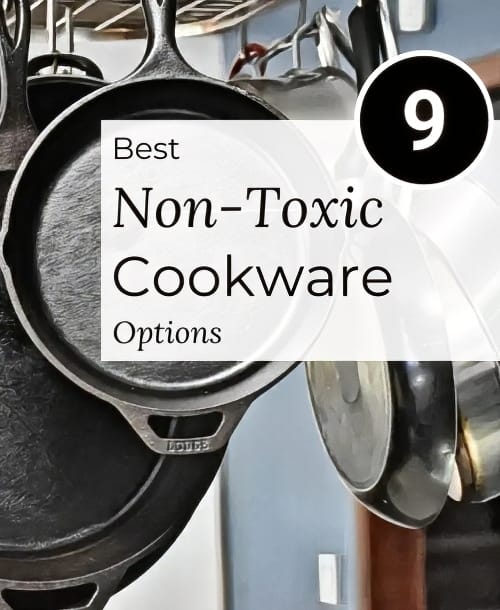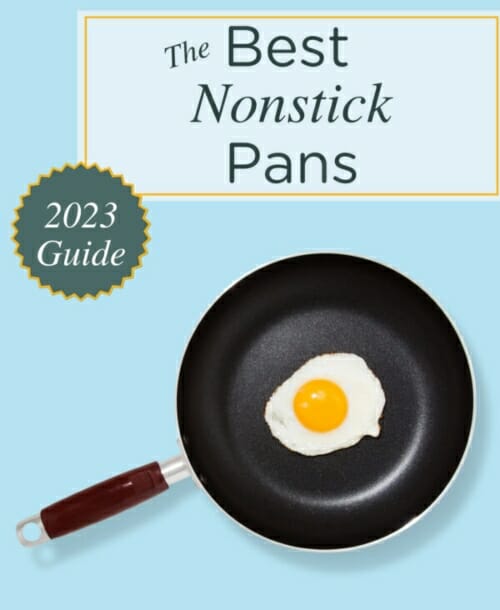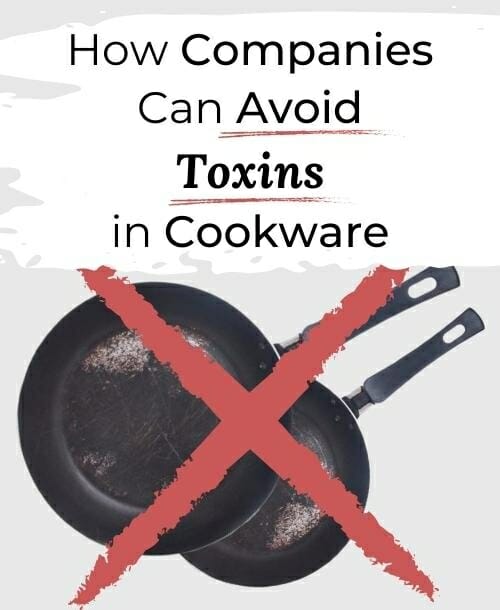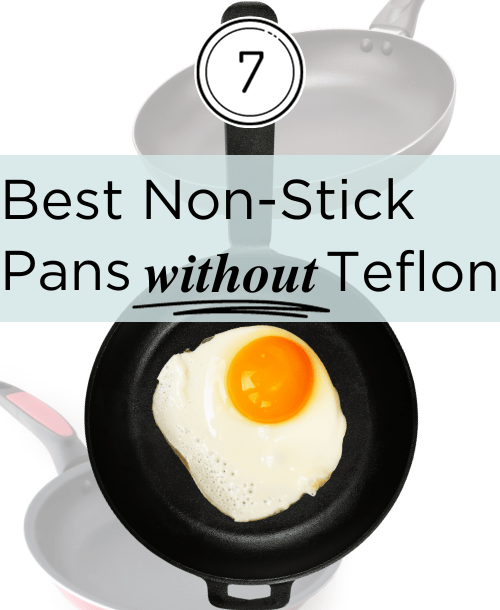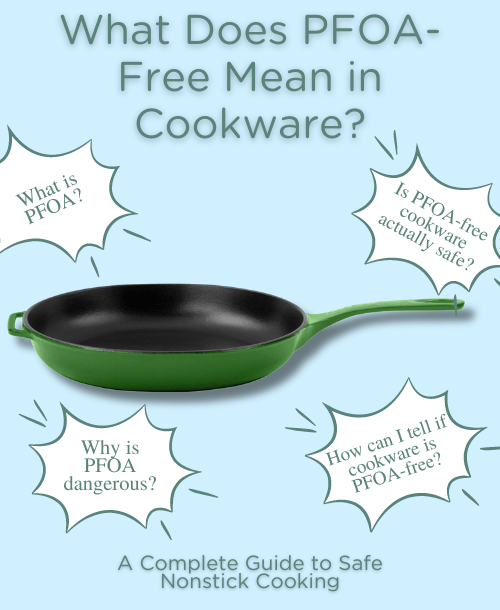
Have you encountered a “PFOA-free” label while exploring the aisles (or web pages) for new cookware? If healthy cooking and a clean planet are essential to you, this label matters!
But what exactly does it mean, and why should you care?
This guide explores the world of cookware without perfluorooctanoic acid — a heat, oil, stain, grease, and water-resistant chemical once common in non-stick pans that’s linked to various health risks.
We’ll explain what PFOA is, why it’s a concern, and why PFOA-free cookware is a better choice for you and your family. We’ll also explore some alternatives to PFOA and give you tips on choosing truly safe cookware.
Ready to make a smart choice about your next pan purchase? Let’s get cookin’!
Medically-reviewed by Dr. Ahmad Alsayes, MBBS
What Is PFOA-Free Cookware?
PFOA-free cookware means just what it sounds like – the pots and pans are made without a chemical called perfluorooctanoic acid.
This PFOA stuff used to be common in non-stick coatings. It helped create that slick, slidey surface we all love for easy flipping and cleaning. Pancakes practically fly outta the pan.
But, while PFOA is great for making cooking a breeze, it may not be so great for our health. Studies have linked PFOA to some serious health problems including different types of cancer.
Let’s quickly explore the health and environmental risks of PFOA:
The Risks of PFOA
PFOA’s durability means it doesn’t break down easily, leading to accumulation in the environment and the human body. According to The American Cancer Society, exposure to PFOA has been associated with health problems like:
- High cholesterol
- Thyroid disease
- Kidney and testicular cancer
- Liver damage
- Developmental issues in infants and children.
How Does PFOA in Cookware Expose Us to the Chemical?
PFOA isn’t exactly the best roommate for your meals. There are two main ways those tiny PFOA molecules can hitch a ride from your pan to your body:
- Flaky Pans: Over time, especially with scratches or wear and tear, non-stick coatings can flake off tiny bits into your food.
- Overheating: If you accidentally turn your stove into a volcano (think hotter than 500°F), cookware with PFOA can release harmful fumes you can breathe in. Double yikes!
Switching to PFOA-free cookware helps avoid these surprise PFOA deliveries, keeping you safe in the kitchen.
The Transition: Is All Cookware Today PFOA-Free?
The good news is, people started to realize PFOA wasn’t so great for us. In 2006, the EPA teamed up with some big chemical companies to phase out PFOA production in the U.S.
This is known as the PFOA Stewardship Program, kind of like a plan to ditch PFOA for good.
By 2013, most major cookware brands had switched to making pans without PFOA. So, if you’re buying new non-stick pans from a reputable company, they are likely PFOA-free.
But here’s the thing: PFOA-free doesn’t always mean perfectly safe. Let’s explore why…
Is PFOA-Free Cookware Safe?
So, PFOA-free sounds good, right? It’s certainly a step in the right direction. But here’s the thing: Most PFOA-free cookware still uses other PFAS chemicals (per- and polyfluoroalkyl substances) to create that non-stick surface.
One example of a questionable replacement for PFOA is GenX, a PFAS chemical used to make non-stick coatings today. While manufacturers claim that GenX is a safer alternative, studies have linked it to some possible health concerns.
Thousands of different PFAS chemicals are out there, and many remain unresearched. Since we’re unsure exactly what they might do to our bodies, we should avoid PFAS entirely.
Luckily, there are plenty of safe cookware options! Cast iron, stainless steel, and ceramic cookware are PFOA- and PFAS-free, giving you peace of mind while cooking.
Want to ditch the non-stick altogether? We’ve got a guide for that: 3 Easy Alternatives to Non-stick (Guide and Live Test)
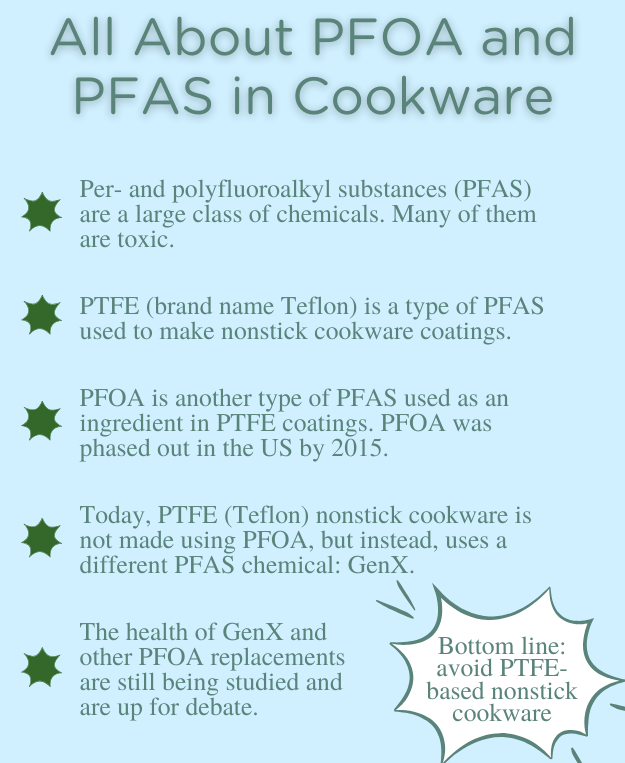
How to Tell if Cookware Is PFOA-Free (and Completely Safe!)
Most cookware these days is PFOA-free, but a little double-checking never hurts! To ensure you’re selecting truly safer cookware, consider the following tips:
- Label check: Look for a clear “PFOA-free” label on packaging or product descriptions. But remember, this doesn’t guarantee the product is free of all PFAS chemicals.
- Contact the manufacturer: Not sure what’s in the pan? Ask the manufacturer directly! Email or call to inquire about the materials used, specifically if they use any PFAS.
- Be wary of older stock: Pans manufactured before the global phase-out of PFOA around 2013-2015 may still contain the chemical. Be especially cautious when purchasing older cookware, even if it’s new from stock, as it may not comply with current PFOA-free standards.
- Trust reputable brands: Opt for brands with transparent safety practices and a reputation for quality. Be cautious of unfamiliar brands that produce their non-stick pans overseas. Sometimes, they lack proper quality control oversight and risk selling cookware containing PFOA.
- Check for certifications: Look for certifications that show the cookware is safe. The EPA’s Safer Choice label or international certifications like the EFSA mean the product meets strict health and environmental standards.
- Ask for Material Safety Data Sheets (MSDS): For ultimate peace of mind, request the Material Safety Data Sheets (MSDS) from the manufacturer. I spent many hours pouring through these documents when I started in e-commerce and sourcing. It details the manufacturer’s exact chemicals used and their safety info. It’s like a full report card for the pan’s materials!
- Avoid High Heat: Avoid cranking the heat on your non-stick pans. These coatings can break down at around 500°F, potentially releasing harmful fumes. Pans can overheat and surpass this temperature in as little as 1 3/4 minutes on high. So, play it safe and keep the heat on medium.
Frequently Asked Questions
Are there any alternatives to PFOA and PFAS in non-stick cookware?
Yes, alternatives to PFOA and PFAS in non-stick cookware include ceramic coatings, hard-anodized aluminum, and cast iron. These materials offer non-stick properties without PFAS chemicals, providing safer and eco-friendly cooking options.
Can PFOA-free cookware still perform as well as cookware with PFOA in terms of non-stick capabilities?
Yes, PFOA-free cookware can perform comparably to cookware with PFOA regarding non-stick capabilities. Advances in manufacturing technologies have led to alternative non-stick coatings that are effective and safe, ensuring easy food release and cleaning without relying on PFOA.
How should I care for my PFOA-free cookware to ensure its safety and longevity?
To care for PFOA-free cookware and ensure its safety and longevity, follow these best practices:
- Use low to medium heat to prevent damaging the non-stick surface.
- Avoid metal utensils; opt for wooden, silicone, or plastic tools to prevent scratches.
- Hand wash gently with a soft sponge and mild detergent; avoid abrasive cleaners.
- Store carefully to avoid scratching the non-stick surface.
Conclusion
Understanding what “PFOA-free” means in cookware is crucial for anyone prioritizing health and environmental sustainability.
This guide unpacked the dangers of PFOA, that chemical sometimes found in non-stick cookware, and how it can impact your health.
We also learned that PFOA-free doesn’t always mean completely safe. Some non-stick cookware uses other chemicals that have yet to be studied.
The good news? There are safe alternatives! Cast iron, stainless steel, and ceramic cookware are PFOA- and PFAS-free, giving you peace of mind while cooking. Read more about these alternatives in our Non-Toxic Cookware Guide.
We even shared some tips for finding truly safe cookware, from reading labels to checking with manufacturers.
Remember, choosing cookware isn’t just about convenience. It’s about keeping your family healthy and protecting our planet.
Now you can cook with confidence!

Hi there! I'm Adam, author and founder of TGL. Since 2016, I've produced and sold non-toxic kitchenware throughout the US. Today, I'm using my passion and experience in sustainable product manufacturing to help families avoid unsafe reusable foodware. When I'm not writing, you'll find me hiking or camping throughout Appalachia!

